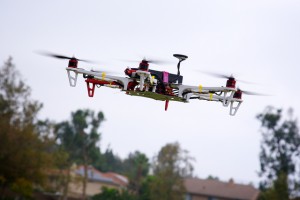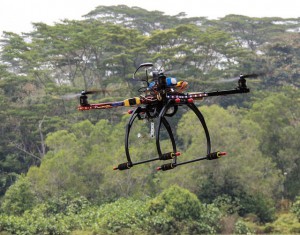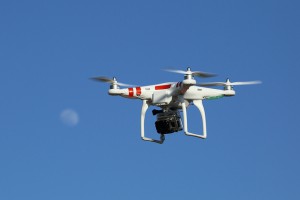Drone Surveying: The Advantages of Using Drones for Agriculture & Forestry

While drone surveying certainly has important applications within the construction and mining industries, many people don’t realize that the significant role drones will play when it comes to land management in forestry and agricultural settings. By conducting quick and accurate surveys from above, unmanned aerial vehicles can help land management agencies gain a much better understanding of what’s happening on ground level, which will, in turn, empower them to make informed decisions. In this post, we’ll take a brief look at some of the advantages of using drones for agricultural land management purposes.
Advantages of Using Drones for Agriculture & Forestry
Understanding Land Health
One of the most important, yet most challenging, charges faced by any land management agency is making sure the area under their supervision is healthy. If they aren’t careful and attentive, plant-based diseases can cause significant damage to forests and agricultural land before the agency in question even realizes what’s happening.
UAV surveying can help alert land managers to any possible signs of problems so that they can respond before things get out of hand. In addition, UAVs can be outfitted with NDVI cameras that use infrared and thermal imaging to create detailed models. These models allow land managers to take a proactive approach to plant health. Instead of waiting for symptoms of a disease to show themselves, land managers can make a plan to take targeted samples.
While taking samples using traditional land surveying technology can be extremely costly and time-consuming, starting with a 3D model allows the agency to be smarter about when and where they take samples. As a result, they are able to get the even better results with a fraction of the headache.
Understanding Economic Impact
While a land management agency’s first priority should be to protect the land that it manages, it can also play an important role in helping businesses and other commercial interests take advantage of the economic value of land, while doing so in a socially responsible manner. For all of the many different factors that go into managing forests and farmland as economic resources, UAVs can help out tremendously.
One of the first steps in making sure that land is being used responsibly is to detect signs of illegal land use, such as unsanctioned logging. Illegal land use may be very difficult to detect using traditional surveying methods, particularly when an agency has very large areas of land to manage. However, UAVs are capable of surveying as much as 400 acres in a single hour, making it very difficult to hide any illegal activity that may be going on in an area.
In addition, UAV surveying can be used for purposes of inventory assessment. In order to fully capitalize on the economics of land, an agency must be able to place an accurate value on a piece of land, allowing for proper levels of taxation. This can’t be accomplished until the agency has a full understanding of the piece of land, and the economic resources it may contain. Using UAVs makes it much easier for an agency to gain this level of understanding.
While the benefits of UAVs as a land surveying technology are impossible to ignore, it’s important to realize that you must work with the right land surveying partner if you hope to really make the most of using drones for agricultural purposes. At Landpoint, we are here to help. We understand the challenges that land management agencies face, and we have direct experience using UAVs to help them overcome these challenges. Review an example of our land management work to get an idea of what we’re capable of, or contact us today to find out more about what we can do for you.
Image Source: Richard Unten




